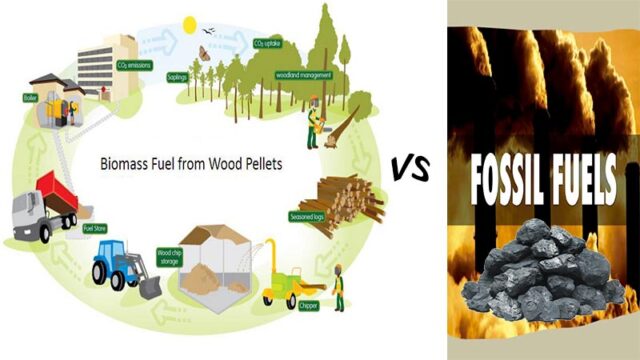Let’s dive into the world of biomass fuels, where nature’s own processes hold the key to combating global warming while providing us with sustainable energy sources.
Understanding Biomass Fuels
Biomass fuels, also known as biofuels, are essentially stored chemical energy derived from plants through the miraculous process of photosynthesis. Picture this: plants soaking in the sun’s energy, converting it into carbon compounds, which we can later harness for various energy needs. Now, here’s the kicker: when we burn biomass fuels, like wood or agricultural waste, the carbon dioxide released is offset by the amount absorbed during plant growth. It’s like a natural carbon cycle dance where what goes out is balanced by what’s taken in.
Exploring the Storage and Utilization of Biomass Energy
Now, let’s talk numbers. While nature theoretically blesses us with the potential to convert about 6.7% of solar energy into chemical energy through photosynthesis, the reality is a bit more modest, with only about 0.3% effectively stored in plant matter. However, even this small percentage packs a punch. Imagine, 60 GtC (Gigatons of Carbon) per year on land and 50 GtC per year at sea—impressive figures, right?
Primary and Secondary Storage: A Renewable Resource Chain
The journey of biomass energy begins with primary storage, which includes all sorts of organic matter that nature generously provides on a renewable basis. We’re talking about everything from wood chips to agricultural residues. But it doesn’t stop there. Secondary storage kicks in, ensuring a continuous supply chain to produce solid and liquid biofuels or synthetic gases. It’s like nature’s own assembly line, ready to churn out energy solutions.
From Combustion to Conversion: Unlocking Biomass Potential
When it comes to utilizing biomass energy, we’ve got options aplenty. We can harness the heat released by combustion for room heating or industrial processes, or convert it into electricity. And let’s not forget about the fascinating world of biofuels—think methane, hydrogen, or alcohols produced from biomass. These babies can power everything from engines to fuel cells, giving petroleum-based fuels a run for their money.
Innovative Conversions: Turning Biomass into Gold
But wait, there’s more. Biomass isn’t just about burning stuff. We can also get creative and convert carbohydrates into ethanol through fermentation or extract plant oils for biodiesel production. Take corn, for example. It’s not just for your dinner table; it can fuel your car too! And let’s not overlook the stability factor. Ensuring that biofuels remain stable during storage is crucial, preventing nasty surprises down the road.
Embracing Biogas: A Promising Frontier
Now, let’s shine the spotlight on biogas—the rising star of the biofuel world. It’s accessible, stable, and packed with energy potential. Plus, it’s incredibly versatile. Whether it’s through fermentation, pyrolysis, or gasification, we’ve got multiple pathways to produce this green gold. And the best part? Biogas storage is a breeze, similar to natural gas but with a few tweaks to handle its unique properties.
Overcoming Challenges: The Road to Biomass Energy Efficiency
Of course, no journey is without its hurdles. Producing bioliquids comes with its own set of challenges, from economic costs to energy consumption. But fear not, for every obstacle presents an opportunity. By improving the efficiency of biomass energy systems and exploring alternative sources like marine algae, we’re paving the way for a greener, more sustainable future.
Conclusion: A Greener Tomorrow Starts Today
So, there you have it—the incredible world of biomass fuels, where nature’s bounty meets human ingenuity. From harnessing the power of photosynthesis to unlocking the potential of biogas, the possibilities are endless. But it all starts with a simple idea: let’s harness the power of nature to fuel a brighter, cleaner future for generations to come. Let’s discuss how we can make it happen.







